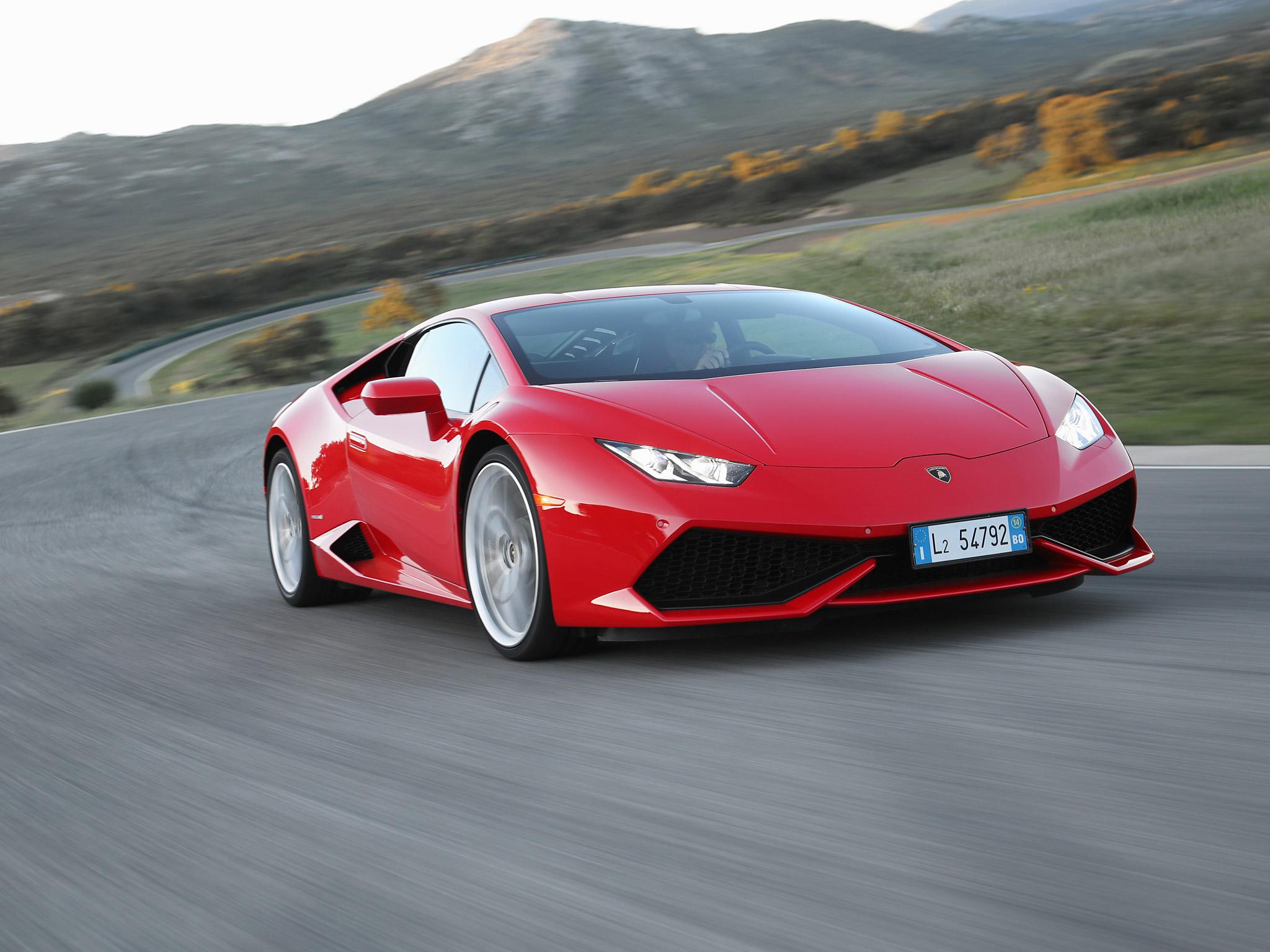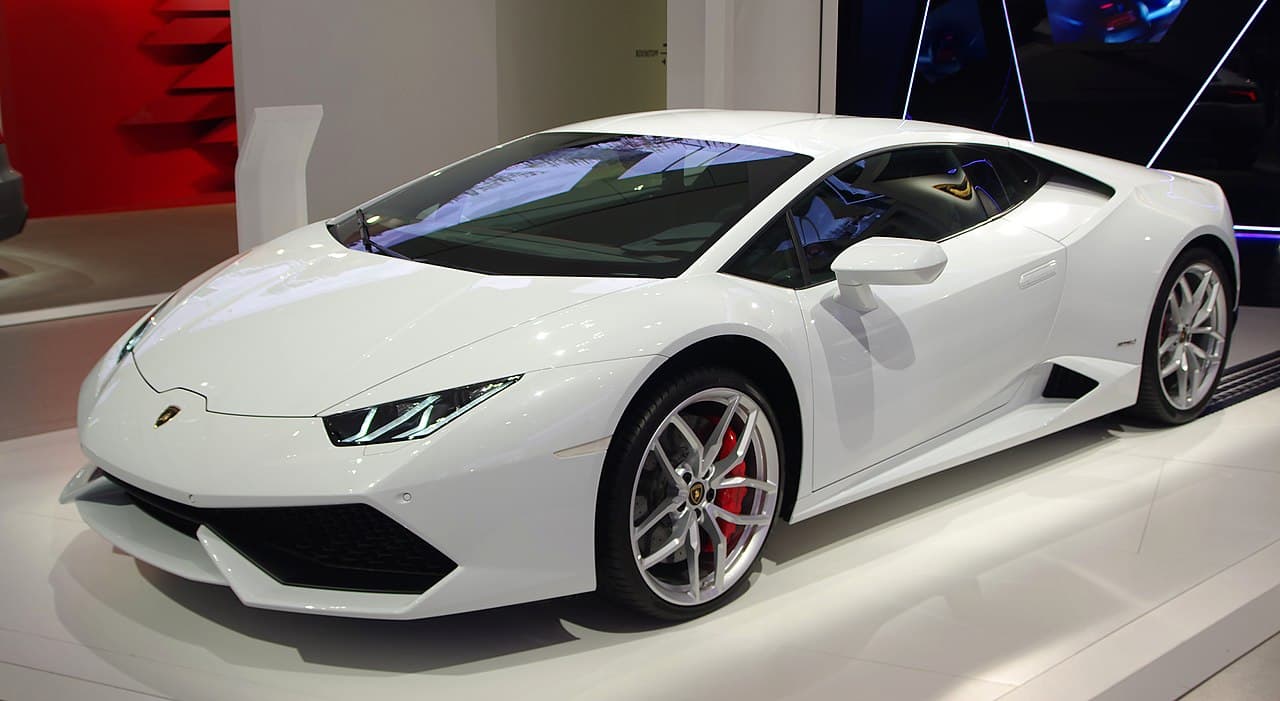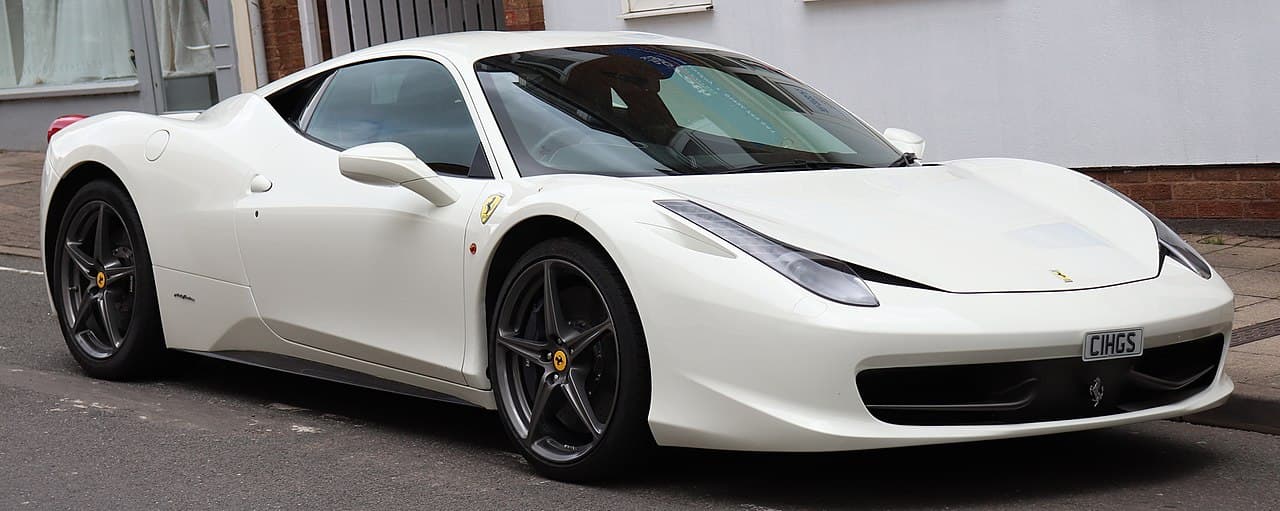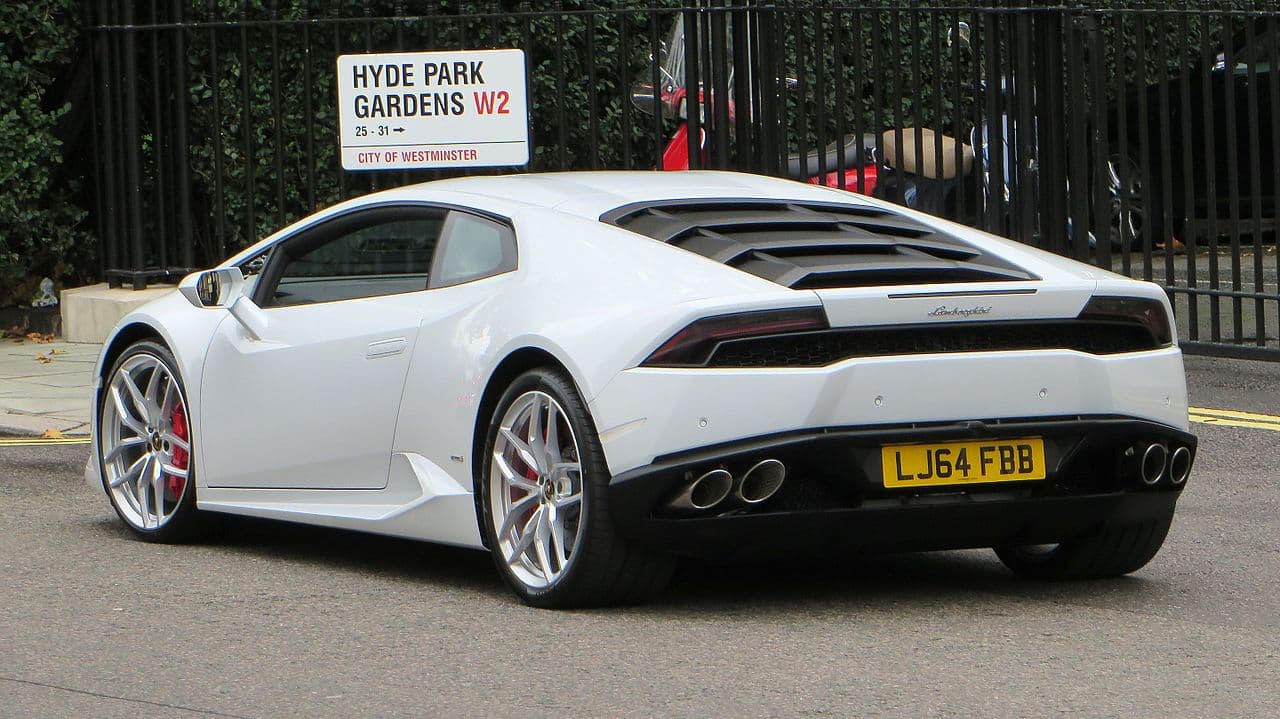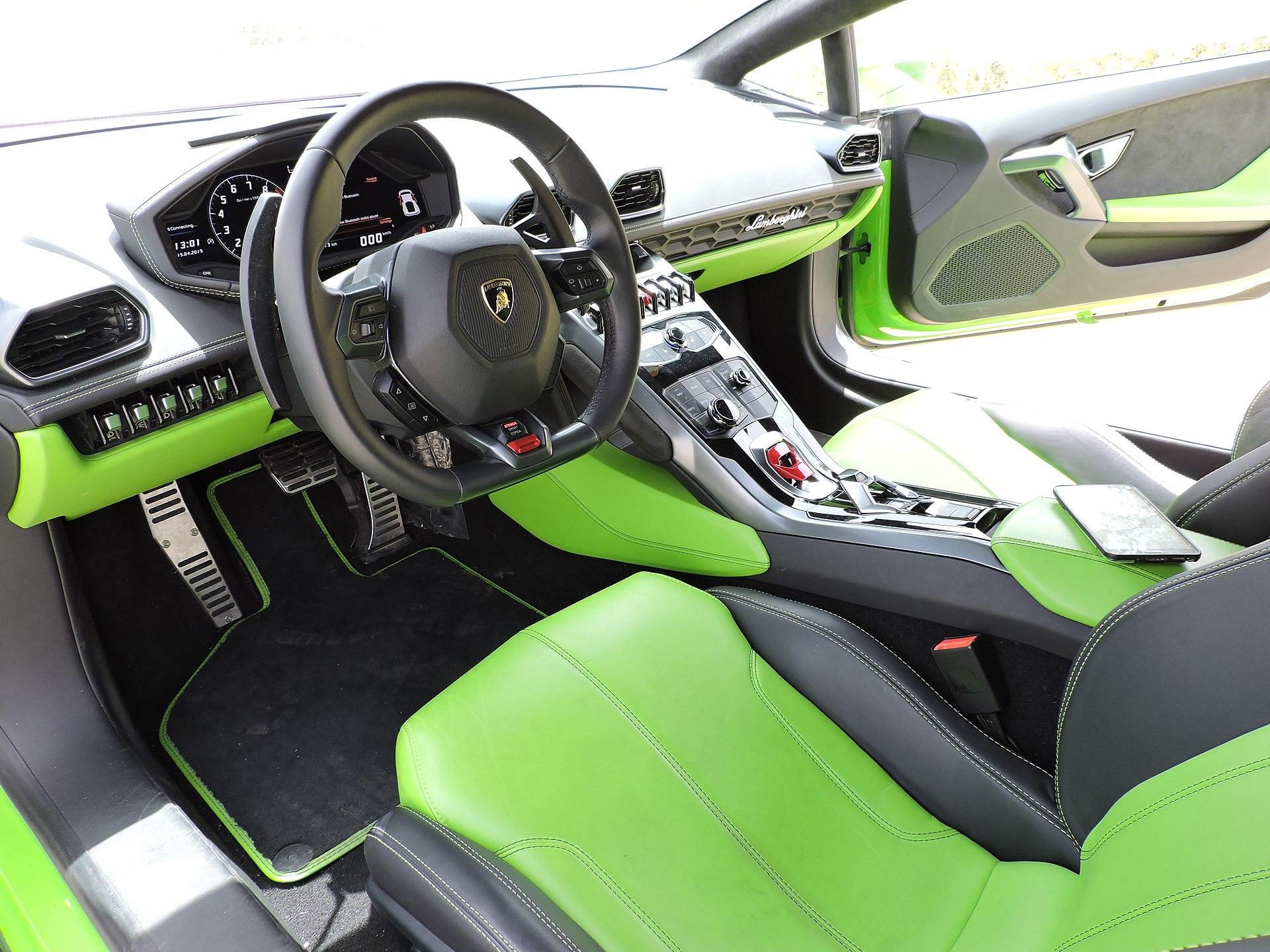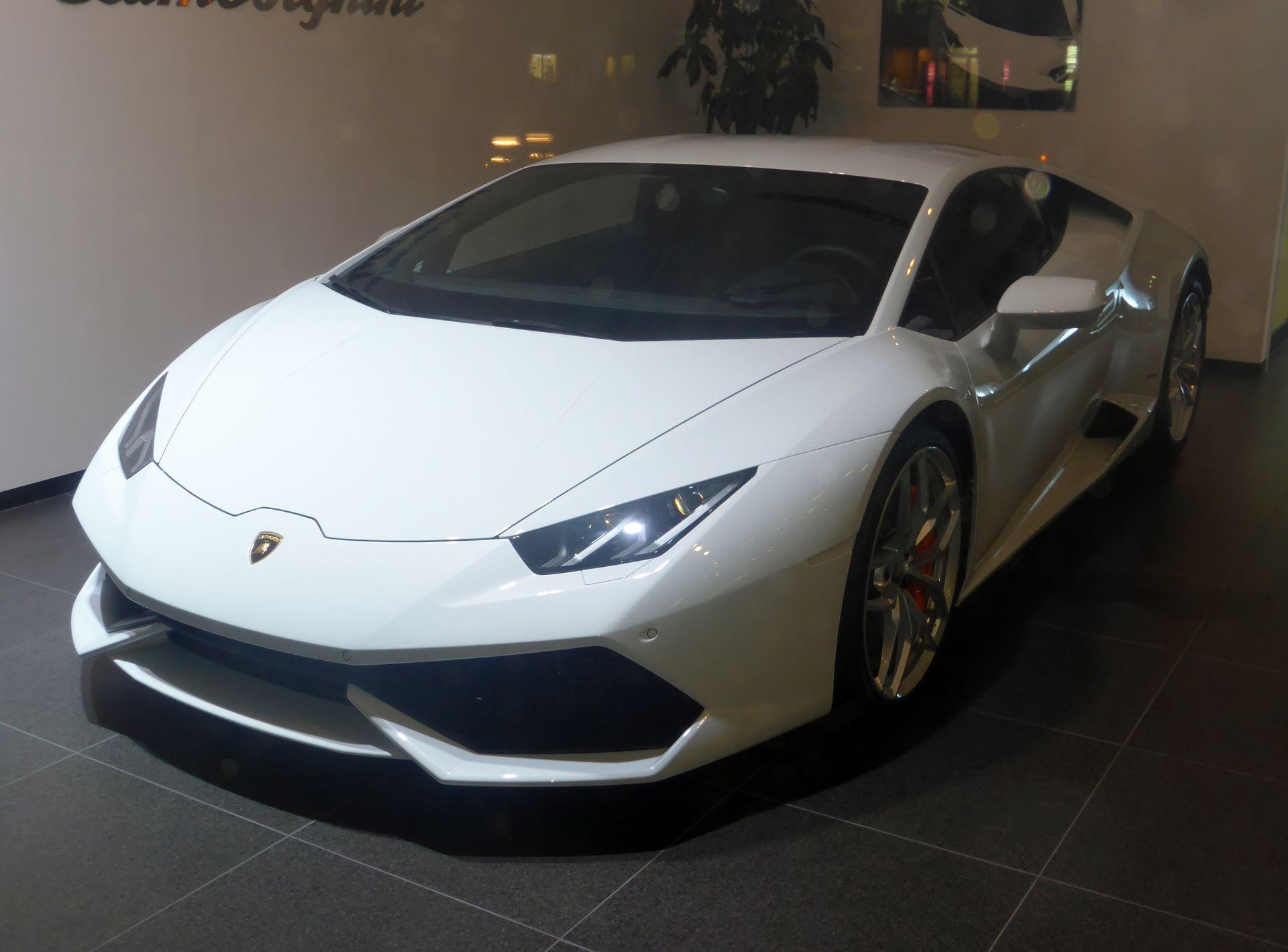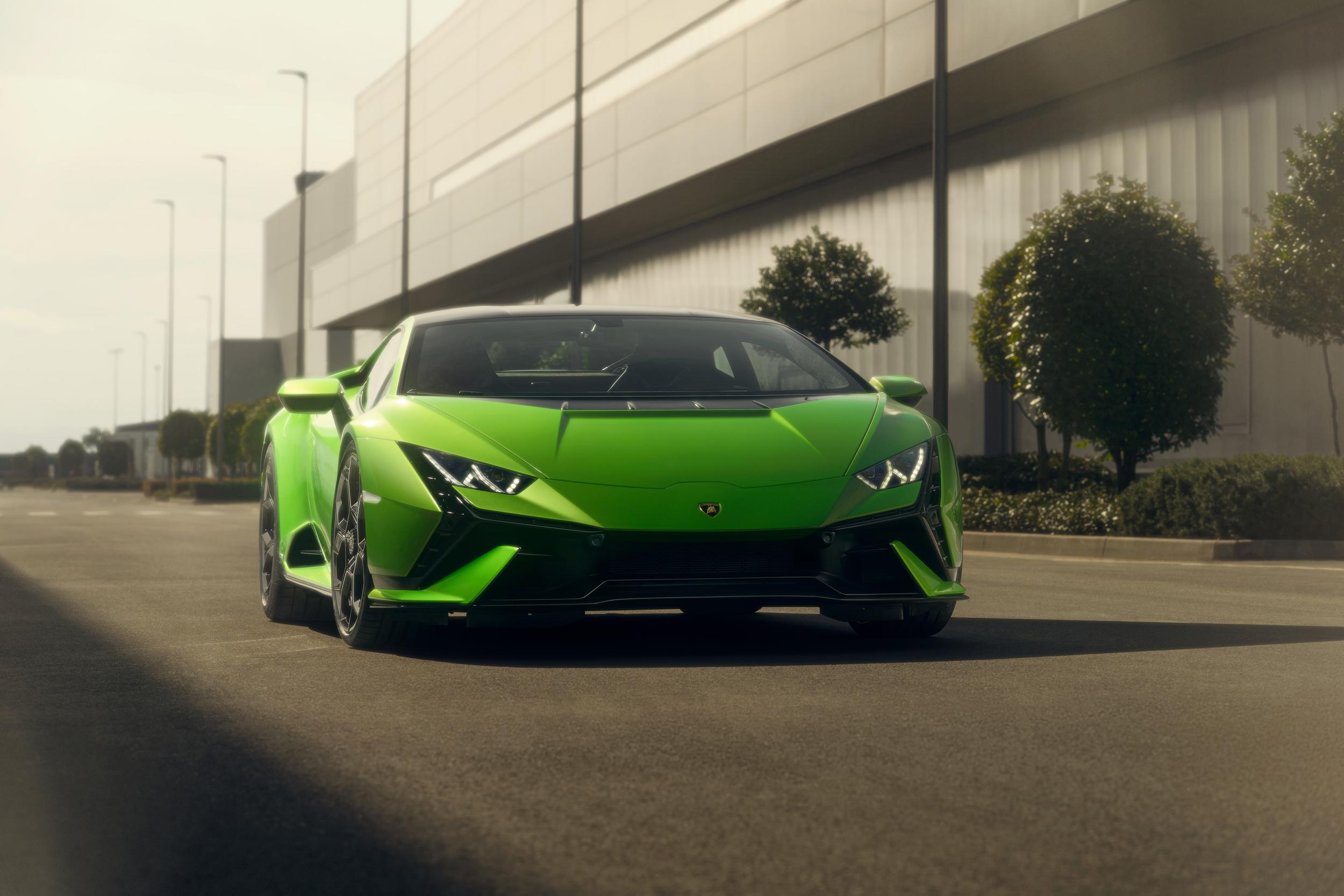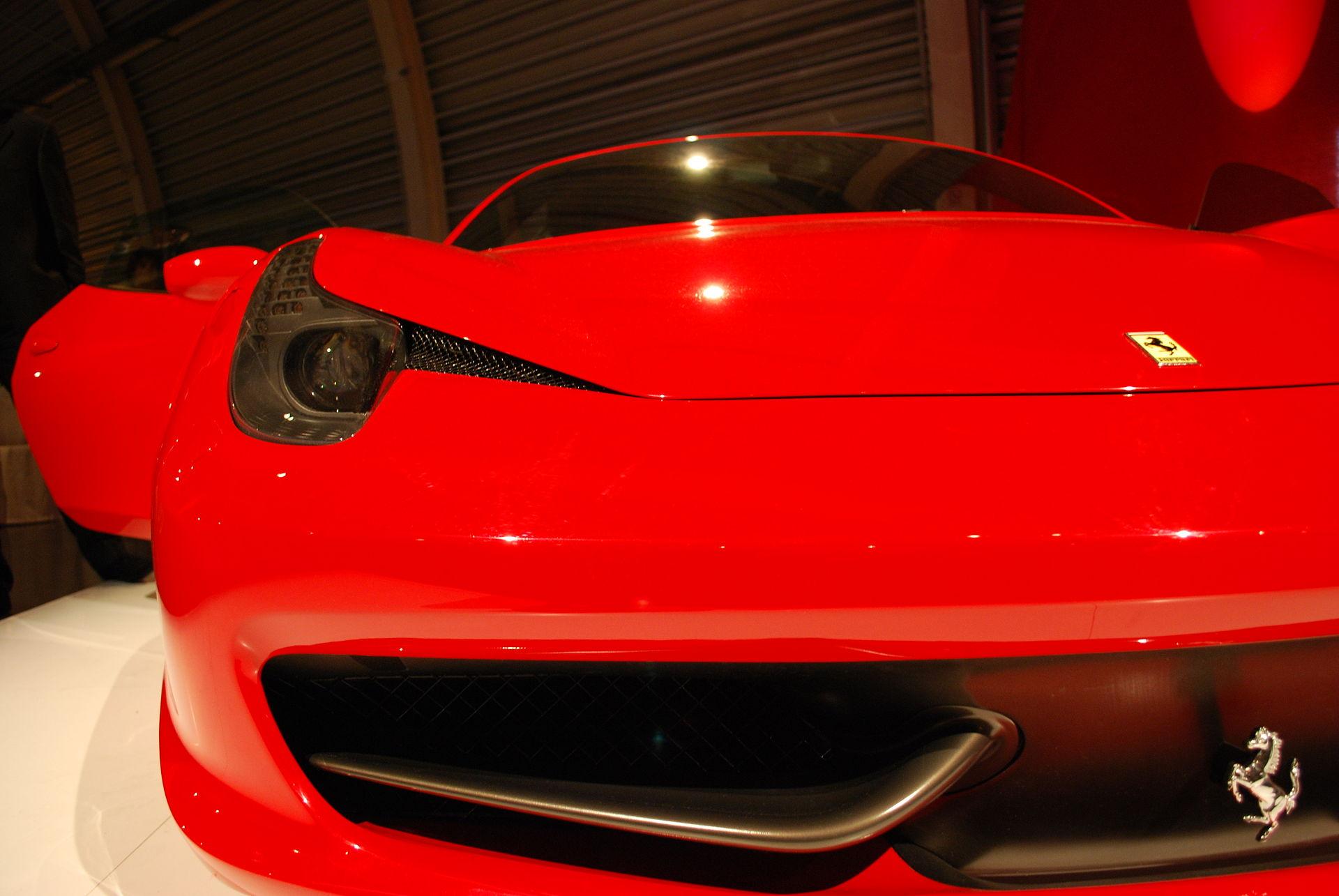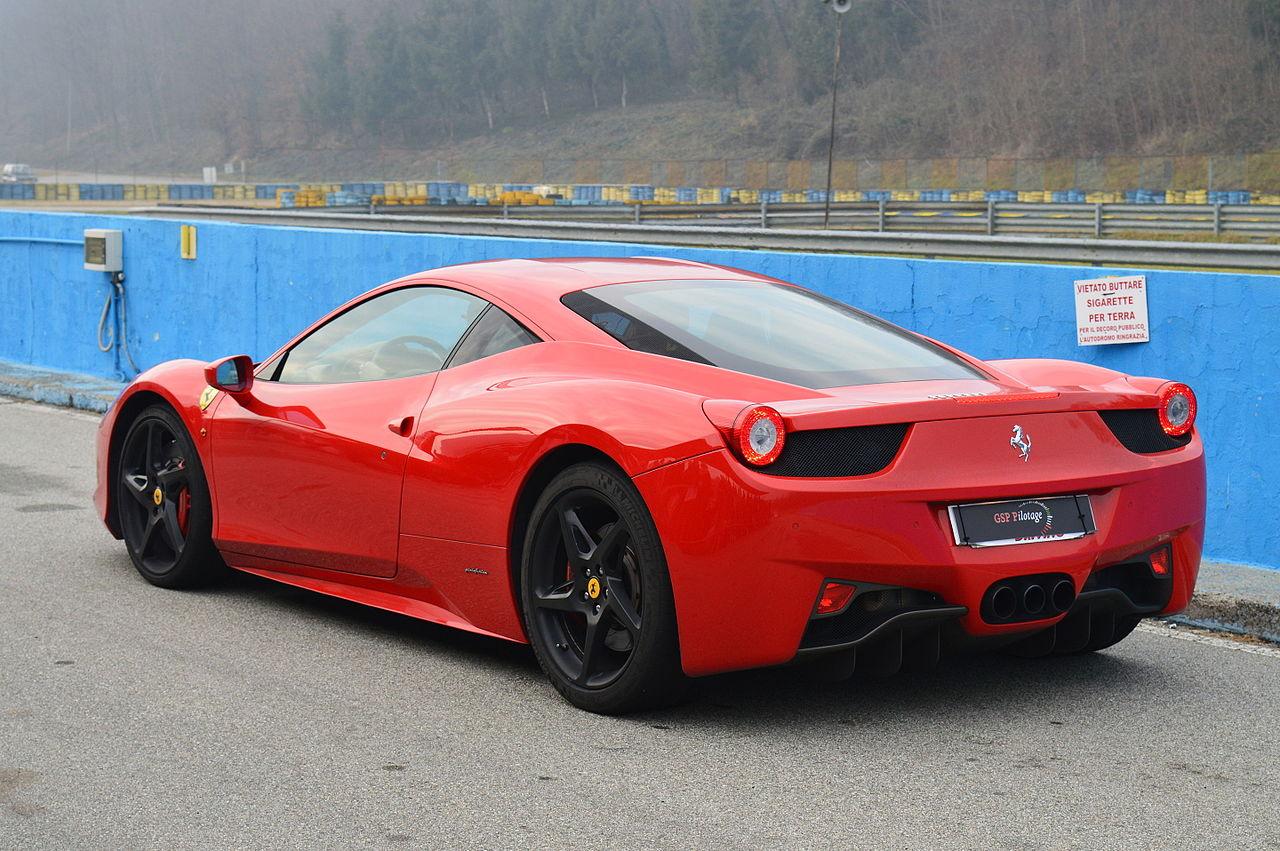Italian supercars have a certain something about them that adds to the experience of both owning and driving one. We don’t want to fall into the trope of saying it’s something like passion, but the fact of the matter is that if you put a Ferrari and a Lamborghini next to an Aston Martin and a Porsche, you will be able to spot the differences.
The Aston Martin DBS, for example, is a lovely car, but it is shaped and designed to exude a certain muscular stance, with wide shoulders and a “come at me!” attitude. The Porsche Type 92 911 Turbo S, on the other hand, is all about refined perfection. Every curve, every line, every hint of performance is designed to millimetric tolerances, and the car, as a result, somehow just looks balanced, poised, on its toes, ready to be driven.
Now, look at the Ferrari 458 Italia and Lamborghini Huracan LP610-4. The first is a low, sleek, and, pardon the use of the term, unbelievably sexy shape. It just exudes a feeling of the designer letting their pen flow across the paper instead of measuring, more art than science. The other is a sledgehammer of a car, all angles and angry proportions—yet it still has a certain art, a certain direction in the design that eschews the style of the Audi parent to be its own car.
So, what better comparison than to put one of the sexiest cars ever designed against one of the angriest cars ever made, in terms of the mid-sized supercar?
The Cars
2015 Lamborghini Huracan LP610-4
Via Wikimedia Commons.
The base spec version of the Lamborghini Huracan hit the markets in late 2014 as a 2015 model year car. Based heavily on the preceding Gallardo in terms of the power unit and implementation of all-wheel-drive, the “Hurricane” burst onto the scene with refined electronics and the latest and greatest version of the 5.2L TFSI V10, producing 602 HP and 413 lb-ft of torque.
What separated the Huracan from the Gallardo, however, was its new electronically controlled AWD system with torque vectoring, as well as being the first Lamborghini to implement the “Doppia Frizione” (Dual Clutch) transaxle. The first gave the car immense grip and handling capabilities, while the second led to buttery smooth and insanely fast shifts—important for a performance supercar.
2015 Ferrari 458 Italia
Via Wikipedia.
It takes a certain amount of ego to put the name of your country of origin after the model name, but Ferrari did just that in 2010 through 2015 with the 458 Italia. Then again, the car was a massive departure from the organic shape of the F430 that preceded it, opting for a long, low, almost knife-like shape that made it aggressive yet beautiful.
Powered by a 4.5L F136 V8, the car was moved along with 562 HP and 396 lb-ft of torque, with a redline that tickled at 9,000 RPM giving it one of the best exhaust howls from a Ferrari since the F355.
The 458 Italia was also a tech showcase for Ferrari, implementing a truckload of developments from Scuderia Ferrari F1. Chief among these was the E-Diff, an electronically controlled differential that reacted faster than a traditional mechanical differential, and allowed for unparalleled slip and locking as the driving dynamics required.
Also included was a pre-brake system, where the pads would be moved into contact with the discs when the driver lifted off the accelerator to give instant braking response, and adaptive suspension that used magnetorheological dampers to stiffen or soften as needed.
Comparing the Lamborghini Huracán & Ferrari 458
0 to 60 MPH
There is a bit of a disparity between the Lamborghini and the Ferrari at this stage, mostly in the fact that the 458 is a RWD car, while the Huracan is AWD. All cars have an inherent issue known as parasitic loss, which is why almost all power figures in marketing is given from the flywheel, not at the wheels. The more mechanical steps the power needs to go through to get to the wheels, the more power is lost.
Despite that, with 602 HP going to all four wheels, a dual clutch gearbox, and a smart electronic transfer case, the Huracan simply catapults itself to 60 MPH in just about 2.5 seconds when using launch control, and about 2.9 seconds when doing the test “naturally.”
In comparison, the Ferrari 458 Italia, with its rear wheel drive and “only” 562 HP, does not suffer as much parasitic loss in terms of power, yet only has two wheels transferring power to the tarmac. As such, the official 0 to 60 MPH figure for the Ferrari is 3.4 seconds using launch control and with the car set to its most aggressive settings.
This difference, even though the Lamborghini is probably only putting down around 500 HP to the wheels, is through having all four wheels scrabbling for grip, with an immensely fast transfer case vectoring torque to the wheels that have the best grip. Such are the advances of technology in terms of all wheel drive that it can overcome parasitic loss to still get to 60 MPH almost a full second faster than the Ferrari.
Via Wikipedia.
Winner: Lamborghini Huracan LP610-4
Nurburgring Nordschleife Track Test
The Green Hell, the Nordschleife that is tucked away in the Eiffel mountains of Germany, is the ultimate proving ground for any car. Tight, twisting sections, long straights, curves that can be taken with the foot planted through the floorboards, and varying elevations at all times provide one of the nastiest, trickiest, and flat out dangerous tracks to ever be made. Manufacturers flock to the track in droves because if their cars can make it around in a decent time, it is something to boast about in marketing.
In conjunction with the German magazine Sport Auto, the 2016 model year Lamborghini Huracan LP610-4 was able to make it around all 12.94 miles of the Nordschleife in 7:28.0. While not breaching the magical 7 minute barrier, this is still an astonishingly fast time. As a bit of an aside, one version of the Huracan was able to breach 7 minutes: the limited edition and seriously track-oriented Huracan Performante LP-640-4, which made it around in 6:52.1.
While not the 2015 version, when the Ferrari 458 Italia first hit the market in 2010, it was, of course, run around the Nordschleife as fast as it could be driven by the test driver for Sport Auto, who do so love to do their Nurburgring tests. The 458 made it around in 7:38.1, almost 10 seconds to the decimal point slower than the Huracan.
It should be noted that one Ferrari mid-sized supercar has made it to the 7 minute breakpoint, the limited edition and heavily track focused Ferrari 488 Pista in 7:00.03, which was the “track” (Pista) version of the car that came after the 458 (the 488 GTB).
This again shows that the Huracan LP610-4 was properly bolted together at the Sant’Agata Bolognese factory, and that when dialed up to full track mode, it can monster around something as twisty and treacherous as the Nordschleife in fine style.
Via Wikipedia.
Winner: Lamborghini Huracan LP610-4
Braking
When you have two midsized supercars capable of exceeding 200 MPH, braking performance becomes essential. For this reason, both the Ferrari 458 Italia and the Lamborghini Huracan LP610-4 come with full carbon-ceramic brake discs and high-end brake pads. These are second generation carbon-ceramic brakes as well, meaning they have a good, progressive feel instead of the jerky, no-feel-then-full-power braking of first generation carbon-ceramics.
The Ferrari, using a special CCM (carbon-ceramic material) that comes down through the Formula 1 program, will stop from 60 MPH in 107 feet (32.6 meters). With a curb weight of 3,450 lbs, that is excellent performance, and uses Ferrari’s own anti-lock braking system, tied in to the traction control, stability control, and driver assist systems to give instant and positive braking feel the moment the brake pedal is pressed.
The Lamborghini uses a carbon-ceramic material that is provided by their partners at Brembo, which is matched with Brembo pads to give all four wheels the best performance possible. Like the 458, the Huracan also has a braking pre-load system where the calipers will bring the brake pads into contact with the disc, but not apply braking, the moment the driver lifts off the throttle.
Despite weighing in at the exact same 3,450 lbs, the Huracan LP610-4 manages to stop a mere 2.4 feet shorter than the 458, at 104.6 feet (31.9 meters).
In the real world, that would be chalked up to “near as makes no difference” and the two cars would be considered as having equal braking performance. However, as this is a head to head, those 2.4 feet of difference give the Huracan the narrowest margin of victory.
Via Wikimedia Commons.
Winner: Lamborghini Huracan LP610-4
Cornering (Lateral Acceleration)
As with all supercars, straight line speed isn’t the end all, be all of the car. Muscle cars, drag cars, and the like are there for straight line speed and acceleration
A supercar not only needs to accelerate hard, go fast, and stop on a dime, it also needs to corner aggressively so that it can make the most of the canyon and mountain roads that dot the South of Europe, as well as many parts of the USA.
The Huracan LP610-4 won the Nordschleife track time comparison, through a combination of an intelligent transfer box, torque vectoring, and immense grip from its tires. With the standard factory tires, Pirelli P Zeros, the Lamborghini can sustain cornering loads of 10 meters per second squared, or 1.02 g of load. In essence, it takes the entire weight of the car and then some pressing sideways against the tires for them to even start to think about slipping into a drift.
The 458 Italia, however, holds a single, and distinct, advantage over the Huracan LP610-4, in that it is rear wheel drive. This means that while the rear tires are the ones providing the power, the front tires are free to use all of their grip to corner the car.
Combined with the impressive suite of electronics that allow for the car to be driven very aggressively without ending up a smoking wreck against the curb, the Ferrari can sustain 11 meters per second squared of lateral acceleration, or 1.08 g of load.
While this may seem like it would be of benefit to the 458 Italia around the Nordschleife, the reason that the Huracan LP610-4 wins out there, but not on the cornering and handling portion, is that it has all four wheels dragging it out of the corners. With the more traditional rear wheel drive, the 458 is slower out of the corners by milliseconds, but over a distance of 12.94 miles, that adds up to 10 seconds overall.
Via Wikipedia.
Winner: Ferrari 458 Italia
Price
When it comes down to it, the performance you get per dollar spent on your supercar matters. This is why the new wave of electric hypercars are all above $1.5 million USD—they are offering immense speed, unbelievable power, and performance beyond anything that has come before. For the more “average” high performance enthusiast, if such a thing exists (hence the quotation marks), a midsized supercar is much more realistic.
In 2015, if you wanted to buy a brand new Ferrari 458 Italia, you were looking at a base price of $239,340 USD. Keep in mind, that MSRP is with no options, no personalization, no add-on services or extended warranties. With all of those added on, the average price for a new 458 coupe version was hovering around the $300,000 USD mark.
These options often included some aerodynamic parts, some cosmetic options, and a little bit of personalization in terms of colors, interior options, and the like.
In comparison, a 2015/2016 Lamborghini Huracan LP610-4 had an MSRP of $262,947 USD. As with the Ferrari, this is without options, without going through the Ad Personam department for personalization, and is for the base coupe model. After adding in all those features, the average Huracan LP610-4 went for about $320,000 to $340,000 USD, depending on just how tricked out you made your car.
For a value proposition at base price, the Lamborghini Huracan LP610-4 offers more engine power, a slightly more out-there interior, and a very aggressive, angular shape that excites the eye from any angle. The Ferrari 458 Italia swings back with a much more understated but sleek interior, an engine that howls beautifully as it crests its 9,000 RPM rev range, and can corner harder than the Lamborghini.
However, with the lower average price and the lower MSRP, the Ferrari takes this one, albeit by a narrow margin.
Via Wikipedia.
Winner: Ferrari 458 Italia
Final Verdict: Lamborghini Huracán vs Ferrari 458
By a 3 to 2 score, the Lamborghini Huracan LP610-4 wins this head to head, with much faster acceleration, a better time around the proving ground that is the Nordschleife, and a braking distance that is negligible. The Ferrari 458 Italia still has extremely respectable cornering performance, loses the braking competition by just 2.4 feet, and on average comes in at a lower cost of purchase.
Both cars are respectable road supercars, capable of long cruises up mountain roads, coastal highways, and are perfectly viable around town. If you are a bit more track minded, the extra two wheels of power and the acceleration out of corners would give the Lamborghini the nod, but don’t be fooled by the 10 second gap between it and the Ferrari. Most tracks are less than 4 miles long, and with a skilled driver behind the wheel, it is very possible that the cars would be so evenly matched that it would be a photo finish.
In terms of what we here at LamboCars would choose, since the Huracan LP610-4 is a much tamer car than the Aventador, and more pleasing to the eye than the Urus, it would be our daily driver choice. There is nothing quite like getting punted in the small of your back by launch control working with all four wheels and 10 cylinders full of angry Italian bulls.
The Ferrari does have its moments, though, and if we could max out the rev range more realistically in the real world, that music from the exhausts might, just might, tip the scales. But alas, there are speed limits in the real world, and when you’re driving a supercar, you’re not exactly what one would call invisible.

